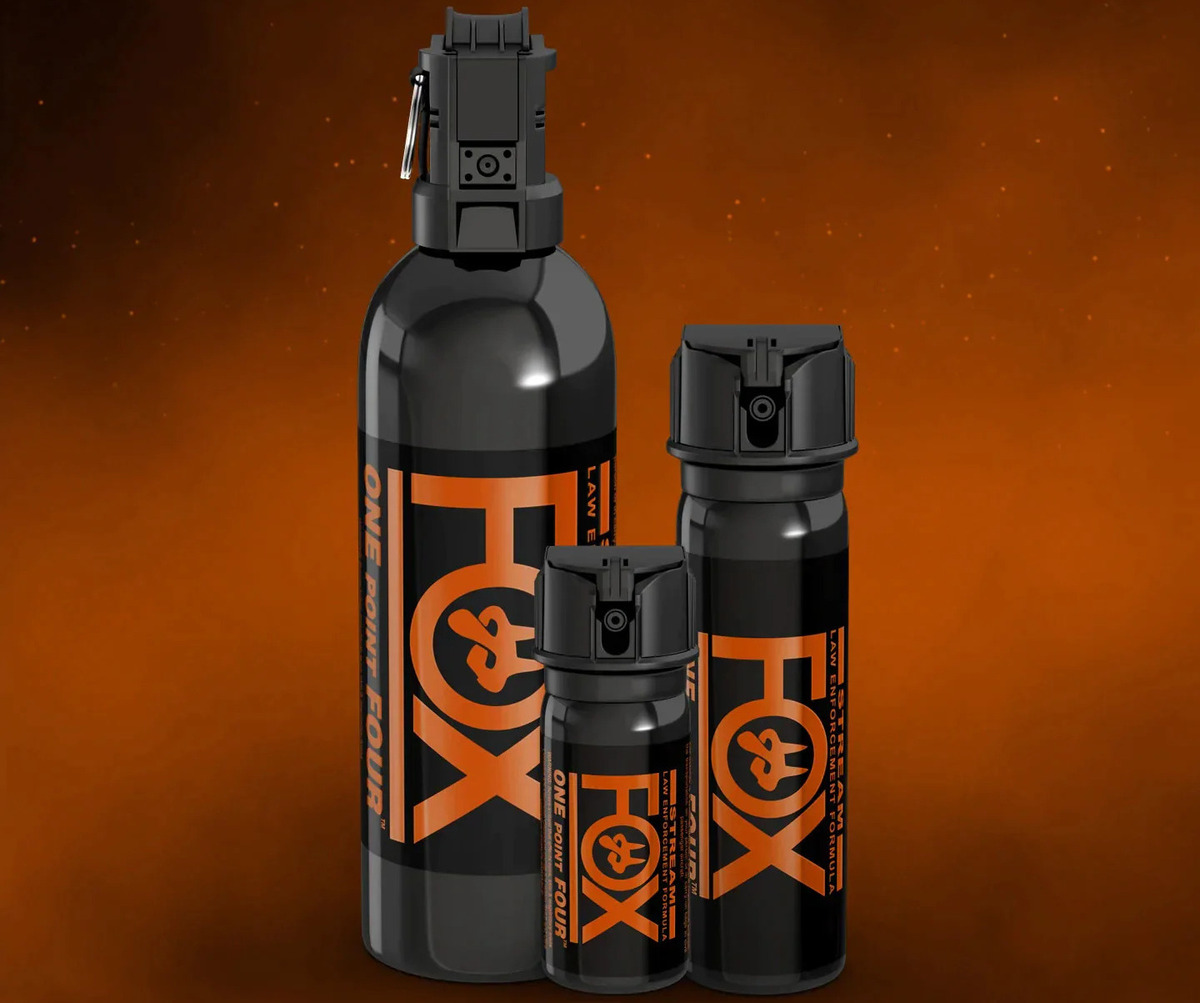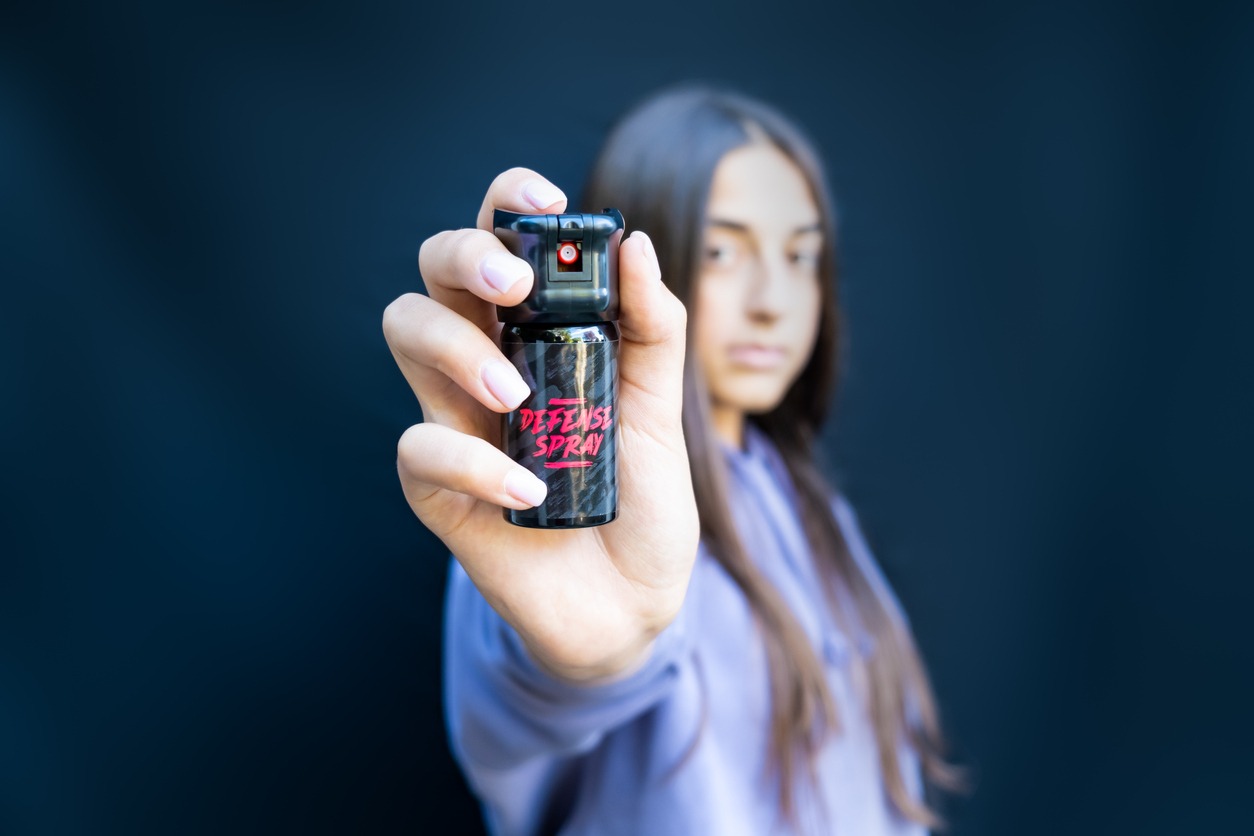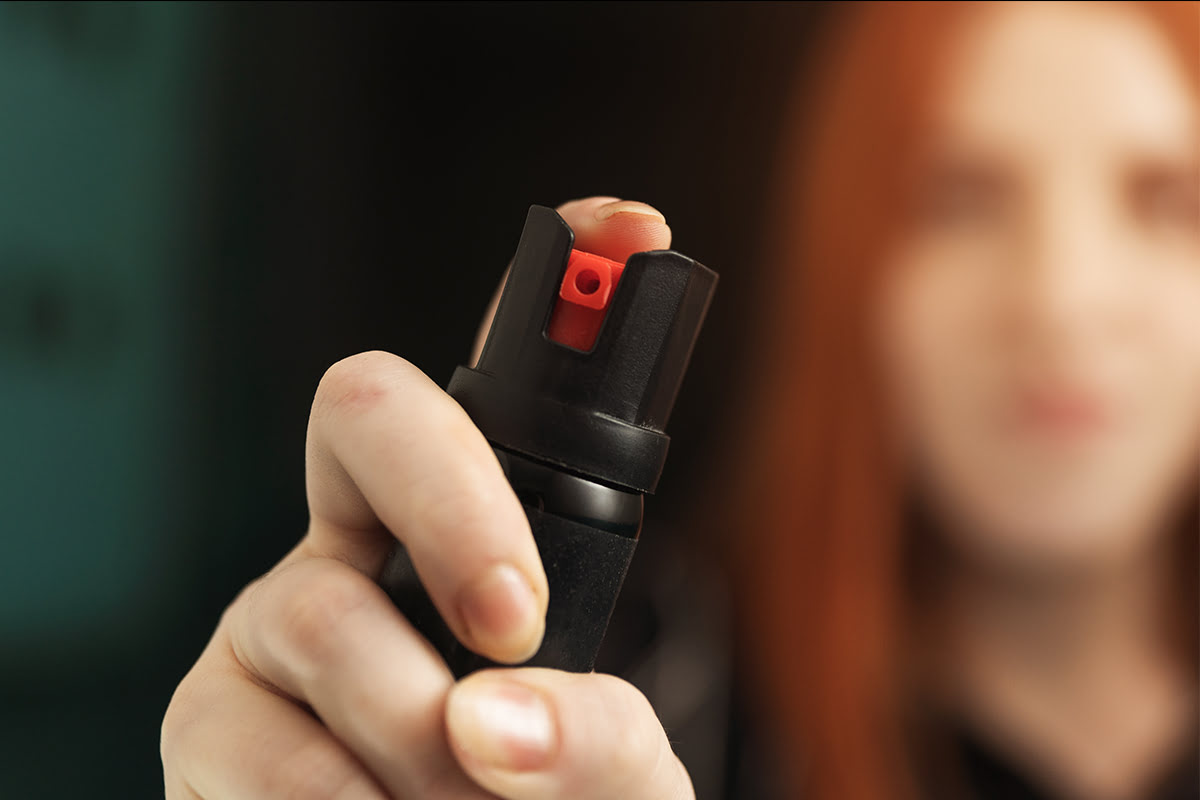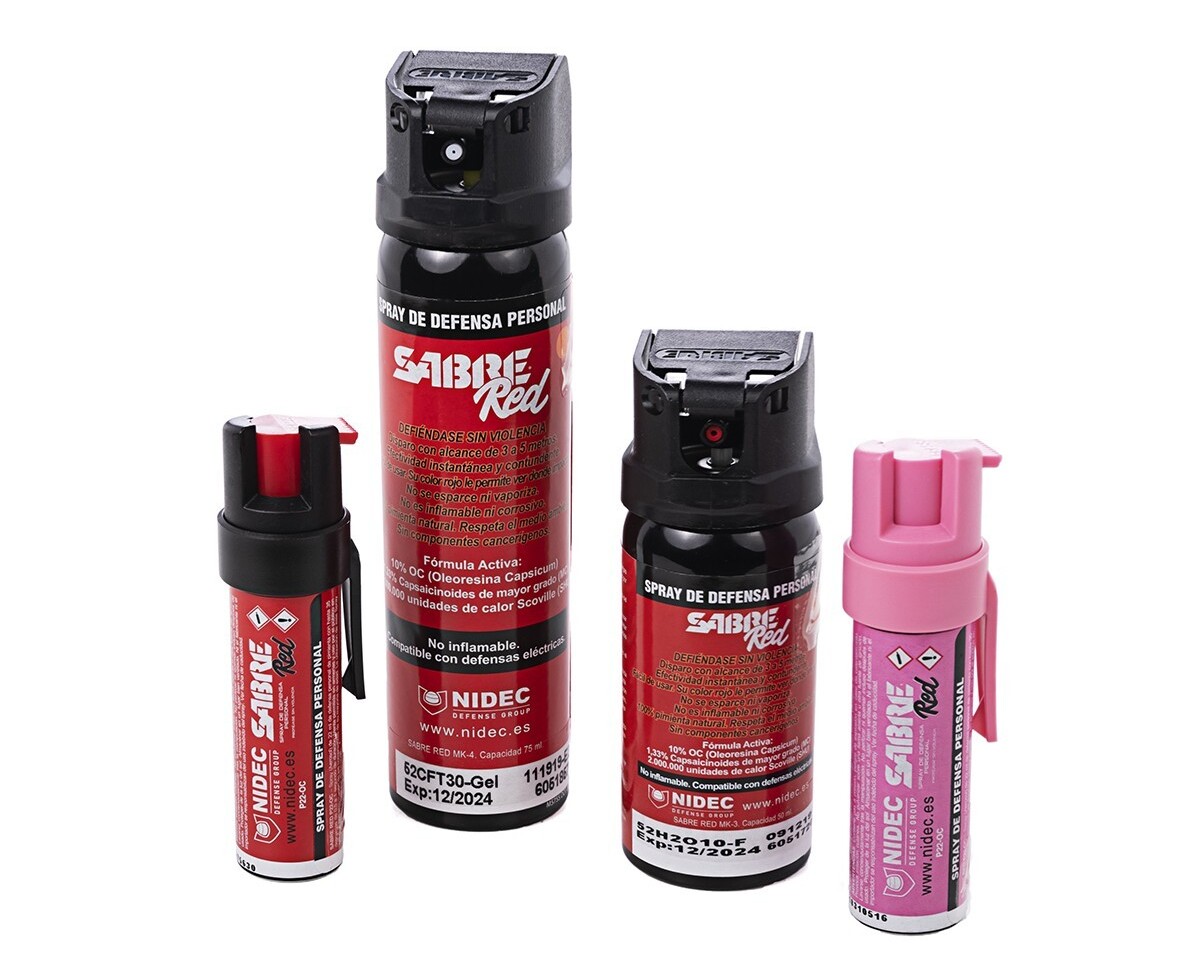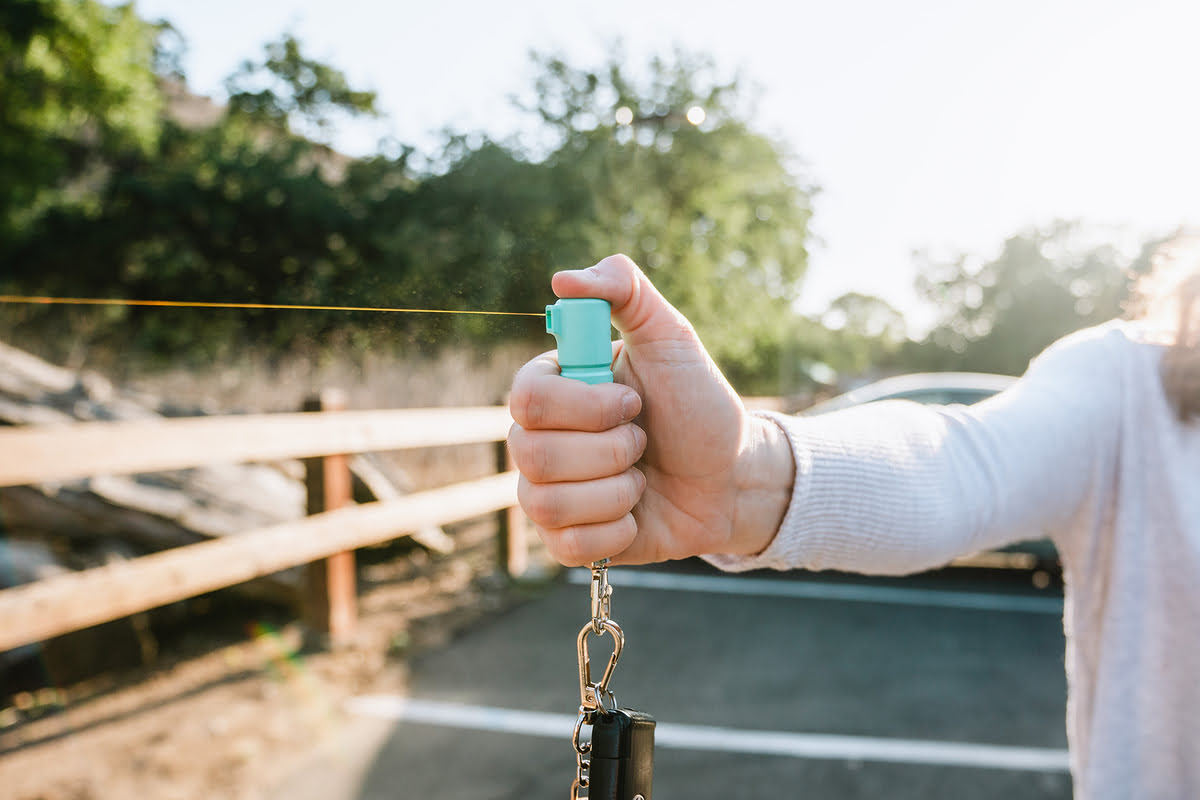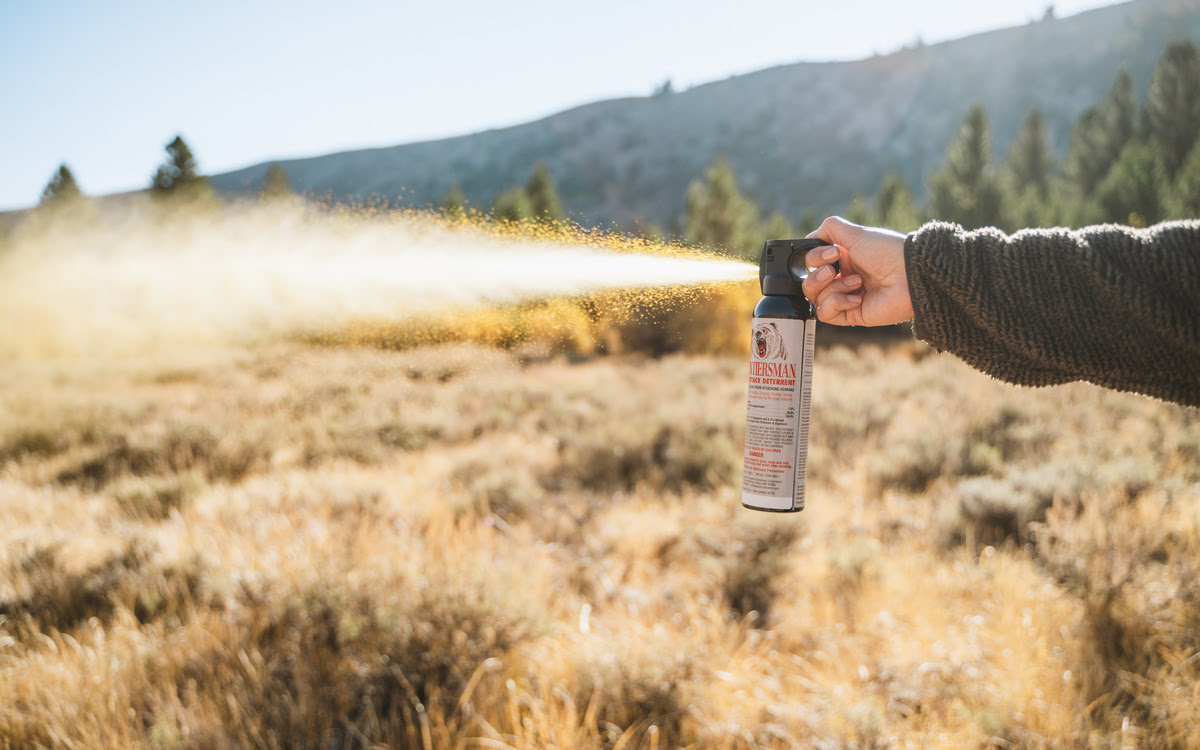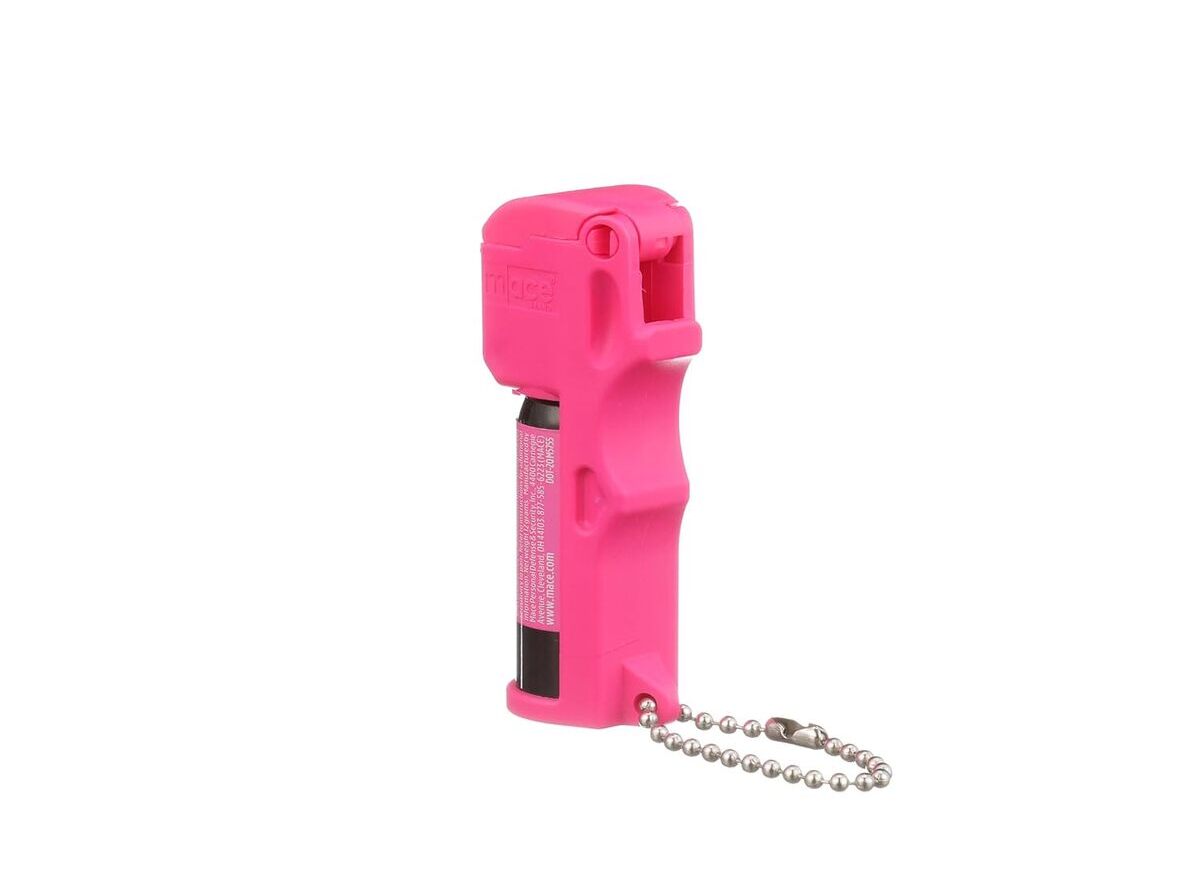Home>Home Security and Surveillance>What Is The Active Ingredient In Pepper Spray?
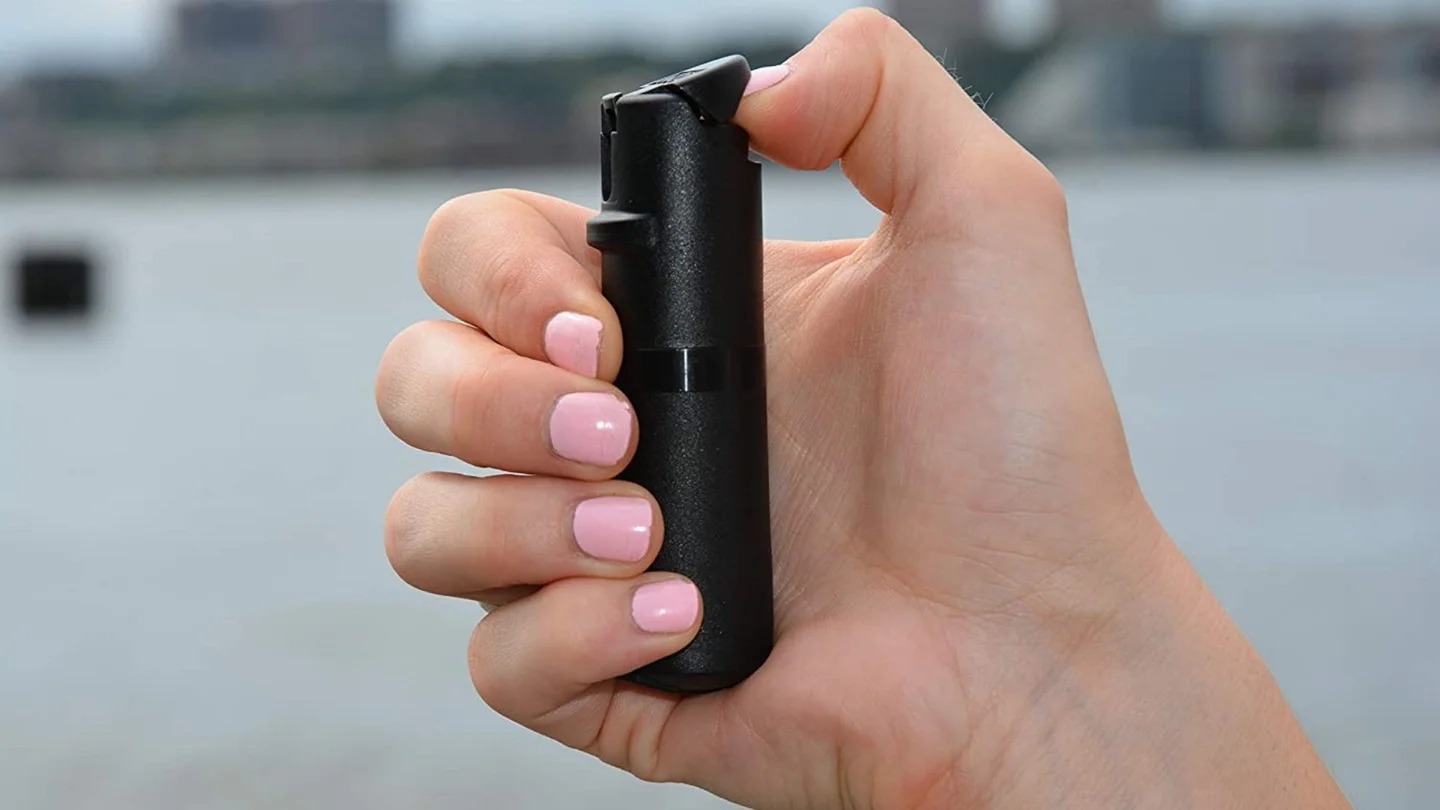

Home Security and Surveillance
What Is The Active Ingredient In Pepper Spray?
Modified: March 6, 2024
Discover the active ingredient in pepper spray used for home security and surveillance. Learn how it works and its effectiveness in self-defense.
(Many of the links in this article redirect to a specific reviewed product. Your purchase of these products through affiliate links helps to generate commission for Storables.com, at no extra cost. Learn more)
Introduction
Welcome to the world of home security and surveillance! In today’s unpredictable world, it’s always better to be safe than sorry. One effective way to protect yourself and your loved ones is by investing in home security systems and surveillance equipment. These technologies not only provide a sense of peace and security but also act as a deterrent to potential intruders.
When it comes to safeguarding your home, pepper spray is another indispensable tool. It is a non-lethal self-defense weapon that can incapacitate an attacker temporarily, giving you precious time to escape to safety.
In this comprehensive article, we will dive into the workings of pepper spray, with a specific focus on its active ingredient. Understanding the active ingredient is crucial in order to make an informed decision about the right pepper spray to suit your needs.
Key Takeaways:
- Capsaicin, found in pepper spray, causes temporary incapacitation by targeting sensory nerves, making it a safe and effective self-defense tool.
- Pepper spray comes in different types and concentrations, offering options for various needs and comfort levels, providing an added layer of security.
Read more: What Is Pepper Spray
Overview of Pepper Spray
Pepper spray, also known as oleoresin capsicum spray or OC spray, is a non-lethal self-defense weapon that is widely used by law enforcement agencies, security personnel, and individuals for personal protection. It is an aerosol spray that contains a concentrated substance derived from chili peppers.
The primary purpose of pepper spray is to temporarily incapacitate an attacker by causing intense pain, swelling, and temporary blindness. When used effectively, it provides the user with an opportunity to escape from a dangerous situation and seek help.
Pepper spray is commonly used in self-defense scenarios because of its simplicity and ease of use. It does not require any special training or expertise, making it accessible to people from all walks of life. Additionally, pepper spray is legal to use for self-defense in many countries, although specific regulations may vary.
The effectiveness of pepper spray lies in its ability to stimulate the sensory nerves, particularly those responsible for pain and vision. This makes it an effective tool against attackers, as it creates a temporary incapacitating effect without causing any long-term harm.
It is important to note that pepper spray should only be used for self-defense purposes and in compliance with local laws and regulations. Misuse or improper use of pepper spray can lead to unintended consequences and legal repercussions.
Importance of the Active Ingredient
The active ingredient in pepper spray is the key component responsible for its incapacitating effects. Understanding the importance of the active ingredient is crucial in order to choose the right pepper spray for your self-defense needs.
The active ingredient in pepper spray is a compound called capsaicin. Capsaicin is derived from chili peppers, specifically from the fruit’s pith or placental tissue. It is a natural compound that gives chili peppers their characteristic heat and spicy flavor.
When capsaicin comes into contact with the eyes, skin, or respiratory system, it triggers an intense burning sensation and irritation. This reaction serves as a powerful deterrent and temporarily incapacitates the attacker.
One of the key advantages of capsaicin as the active ingredient in pepper spray is its non-lethal nature. Unlike other self-defense options, such as firearms or knives, pepper spray is designed to incapacitate without causing permanent harm or risk of fatality.
Furthermore, capsaicin is effective even against individuals who may have a higher tolerance for pain. It affects the sensory nerves directly, ensuring that the spray’s effects are felt regardless of the person’s pain threshold.
Another important aspect to consider is the effectiveness of capsaicin on different types of attackers. While some individuals may be more resistant to physical force, the chemical properties of capsaicin make it highly effective against a wide range of potential threats.
Additionally, the temporary nature of capsaicin’s effects allows for a safe outcome in most situations. Once the effects of the spray wear off, the individual can recover without experiencing any lasting harm.
It is worth noting that the concentration of capsaicin in pepper spray can vary, and higher concentrations will typically result in more potent effects. Therefore, understanding the concentration and strength of the active ingredient is important when selecting a pepper spray that suits your specific needs and comfort levels.
Overall, the active ingredient, capsaicin, is of utmost importance in pepper spray as it is responsible for the spray’s effectiveness, non-lethality, and ability to incapacitate attackers temporarily. By understanding the active ingredient, you can make an informed decision when choosing a pepper spray for your personal safety needs.
The Active Ingredient in Pepper Spray: Capsaicin
The active ingredient in pepper spray, as mentioned earlier, is capsaicin. Capsaicin is a natural compound found in various types of chili peppers, including jalapeños, habaneros, and cayenne peppers. It is what gives these peppers their characteristic heat and makes them spicy.
Capsaicin has various properties that make it an ideal active ingredient for pepper spray. It is highly potent and can cause an intense burning sensation, irritation, and inflammation when it comes into contact with the eyes, skin, or respiratory system.
When pepper spray is deployed, capsaicin is dispersed in an aerosol form. Upon contact with an attacker’s eyes, capsaicin causes immediate dilation of the blood vessels in the eyes, leading to temporary blindness. The attacker’s eyes will experience pain, redness, and swelling, impairing their vision and ability to see clearly.
In addition to affecting the eyes, capsaicin also irritates the respiratory system when inhaled. It can cause coughing, shortness of breath, and a sensation of choking or suffocation. This further incapacitates the attacker, making it difficult for them to pursue their intended target.
The effects of capsaicin are not limited to the eyes and respiratory system. When it comes into contact with the skin, capsaicin causes a burning sensation, intense irritation, and redness. It can create a feeling of extreme discomfort, discouraging the attacker from continuing their assault.
It is important to note that while capsaicin is highly effective as an active ingredient, its effects are temporary and will begin to subside after a certain period of time. The duration of the effects can vary depending on factors such as the concentration of capsaicin and the individual’s sensitivity to it.
Despite its temporary nature, capsaicin is incredibly potent and provides a reliable means of self-defense when used properly. It allows individuals to incapacitate an attacker and create a window of opportunity to escape to safety.
Furthermore, capsaicin is non-lethal and does not pose any long-term health risks when used appropriately. It is considered a safer alternative to other self-defense options, such as firearms, that carry a greater risk of permanent harm or fatality.
Overall, capsaicin is the active ingredient that makes pepper spray a highly effective self-defense tool. Its ability to cause intense pain, temporary blindness, and respiratory distress incapacitates attackers, providing necessary protection for those in dangerous situations.
The active ingredient in pepper spray is capsaicin, which is derived from chili peppers. It causes a burning sensation, swelling of the eyes, and difficulty breathing.
How Capsaicin Works
Capsaicin, the active ingredient in pepper spray, works by targeting the sensory nerves in the body, specifically those responsible for pain and irritation. When capsaicin comes into contact with these nerves, it triggers a cascade of physiological responses that lead to the incapacitating effects of pepper spray.
When pepper spray is sprayed onto an attacker, capsaicin particles are dispersed in the air, making their way to the target’s eyes, nose, and mouth. Upon contact, capsaicin binds to and activates a receptor called TRPV1 (Transient Receptor Potential Vanilloid 1) found on the sensory nerves.
Activation of the TRPV1 receptor triggers a series of events. First, it causes the release of neuropeptides such as substance P, which are involved in the transmission of pain signals to the brain. This leads to an immediate sensation of intense pain.
Next, capsaicin stimulates the release of inflammatory mediators such as histamine and prostaglandins, which cause the blood vessels to dilate, leading to swelling and redness. This response aggravates the pain and contributes to the overall discomfort experienced by the attacker.
Additionally, capsaicin can induce a sensation of heat by activating heat-sensitive receptors known as TRPV1 channels. This gives the sensation of intense burning and exacerbates the pain experienced by the attacker.
When capsaicin comes into contact with the eyes, it irritates the cornea and conjunctiva. This irritation causes the eyes to tear up profusely, leading to temporary blindness. The tears also aid in flushing out the capsaicin particles from the eyes, helping to alleviate the effects over time.
In the respiratory system, capsaicin irritates the mucous membranes, causing coughing, wheezing, and difficulty breathing. This can make it challenging for the attacker to pursue their intended target, as they would be preoccupied with their own discomfort and respiratory distress.
The effects of capsaicin are temporary and typically subside within 30 minutes to an hour. During this time, the attacker may experience residual discomfort, redness, and swelling, but there are no long-term harmful effects associated with exposure to capsaicin.
It is important to note that the effectiveness of capsaicin can vary depending on the concentration of the active ingredient in the pepper spray. Higher concentrations generally result in more potent effects, but it is crucial to use pepper spray responsibly and in compliance with local laws and regulations.
Overall, capsaicin works by activating sensory nerves and causing pain, irritation, temporary blindness, and respiratory distress. Its actions create a strong deterrent and allow individuals to protect themselves in dangerous situations by incapacitating the attacker.
Read more: What Pepper Is Used In Pepper Spray
Effectiveness and Safety of Capsaicin in Pepper Spray
Capsaicin, the active ingredient in pepper spray, is widely regarded as an effective and safe means of self-defense when used properly. Its unique properties make it a popular choice for personal protection.
First and foremost, capsaicin is highly effective in incapacitating attackers. When pepper spray is deployed, capsaicin targets the sensory nerves responsible for pain and irritation, causing intense discomfort and temporary incapacitation. The pain, swelling, and temporary blindness it induces create an opportunity for the victim to escape to safety.
One of the key advantages of capsaicin is its non-lethal nature. Unlike other self-defense options, such as firearms, pepper spray does not pose a high risk of permanent harm or fatality when used correctly. It incapacitates attackers without causing long-term damage, making it a safer alternative for personal protection.
Moreover, capsaicin is effective even against individuals with a higher pain tolerance. It directly affects the sensory nerves, ensuring that the spray’s effects are felt regardless of an individual’s tolerance level. This makes it a reliable option for self-defense in various situations.
When used properly and in compliance with local laws, pepper spray with capsaicin as the active ingredient is generally considered safe. It does not pose significant health risks or long-term harm when used responsibly. However, it is crucial to follow proper usage guidelines and consider factors such as the concentration of capsaicin and potential allergic reactions.
While pepper spray with capsaicin is generally safe, there are instances where caution should be exercised. Some individuals may have underlying health conditions or sensitivities that could make them more susceptible to adverse effects. It is advisable to consult with a medical professional before using pepper spray if you have any known allergies or respiratory issues.
It is also important to note that pepper spray should only be used for self-defense purposes and in appropriate situations. Misuse or improper use of pepper spray can lead to unintended consequences or legal repercussions. Familiarize yourself with local laws and regulations regarding pepper spray use, and only use it as a last resort to protect yourself or others.
It is worth mentioning that individuals considering the use of pepper spray should also acquaint themselves with proper handling and storage guidelines. This includes keeping it out of reach of children and ensuring that it is easily accessible in case of an emergency.
Overall, capsaicin in pepper spray is highly effective and safe when used responsibly. It provides individuals with a means of self-defense without causing long-term harm or posing a significant health risk. By understanding the proper usage guidelines and local regulations, one can harness the power of capsaicin in pepper spray to enhance personal safety.
Different Types and Concentrations of Pepper Spray
Pepper spray comes in various types and concentrations, allowing individuals to choose the most suitable option for their self-defense needs and preferences.
1. Stream Spray: This type of pepper spray releases a concentrated stream of liquid, offering greater accuracy and range. It is ideal for outdoor use and situations where you need to target a specific area or assailant.
2. Fogger Spray: Fogger spray disperses the pepper spray in a wide cloud, covering a larger area and making it easier to hit multiple attackers or create a barrier. It is effective in confined spaces or situations where you may face multiple assailants.
3. Gel Spray: Gel pepper spray is formulated with a thick substance that clings to the attacker’s face upon contact. This ensures that the spray doesn’t easily disperse in the air, minimizing the risk of blowback or unintended exposure to yourself. Gel spray is less likely to affect bystanders in outdoor or windy environments.
4. Keychain Spray: Keychain pepper sprays are compact and convenient to carry. They are designed to attach to your keychain for quick and easy access. Keychain sprays often come in smaller sizes but can still provide an effective means of self-defense.
Now, let’s discuss the concentration of capsaicin in pepper spray. The concentration is usually indicated by the Scoville Heat Units (SHU). The SHU rating represents the level of capsaicinoids present in the pepper spray.
1. Low Concentration: Pepper sprays with a lower SHU rating, typically ranging from 500,000 to 1 million SHU, are suitable for general civilian use. They provide an effective means of self-defense without causing excessive pain or harm.
2. Medium Concentration: Medium concentration pepper sprays have an SHU rating between 1 million and 2 million. They offer increased potency and are often favored by law enforcement personnel and individuals who require stronger self-defense options.
3. High Concentration: Pepper sprays with SHU ratings above 2 million are considered high concentration and are primarily used by professionals in the military or law enforcement. These sprays are incredibly potent and should be handled with caution.
When selecting a pepper spray, it is essential to consider factors such as the intended use, your comfort level, and any local regulations that may govern the use of pepper spray. It is also important to familiarize yourself with the specific instructions and guidelines provided by the manufacturer.
Regardless of the type or concentration, it is crucial to practice responsible use and understand the potential effects of pepper spray. Remember, pepper spray is a self-defense tool that should only be used in lawful and legitimate situations to protect yourself or others.
Ultimately, having a pepper spray that suits your preferences and meets your specific self-defense needs can provide you with an added layer of security and peace of mind.
Conclusion
In conclusion, pepper spray is an invaluable tool for personal safety and self-defense. Understanding the active ingredient, capsaicin, and its effects is crucial in selecting the right pepper spray for your needs. With its ability to incapacitate attackers temporarily, pepper spray provides a vital window of opportunity to escape dangerous situations and seek help.
Pepper spray, with capsaicin as its active ingredient, is highly effective in causing intense pain, temporary blindness, and respiratory distress. It targets the sensory nerves responsible for pain and irritation, ensuring that even individuals with a higher pain threshold are affected.
Furthermore, capsaicin’s non-lethal nature sets pepper spray apart from other self-defense options, offering a safer alternative that minimizes the risk of permanent harm or fatality. It is important to follow proper usage guidelines, exercise caution, and comply with local laws when using pepper spray.
Pepper spray comes in different types, including stream, fogger, and gel sprays. Each type has its own advantages and is suitable for specific situations. Additionally, varying concentrations of capsaicin, measured in Scoville Heat Units (SHU), offer different levels of potency to cater to different needs and comfort levels.
As with any self-defense tool, responsible use and proper handling are crucial. It is important to familiarize yourself with the specific instructions provided by the manufacturer and to store pepper spray securely, out of the reach of children.
Ultimately, pepper spray with capsaicin as its active ingredient is an effective and non-lethal means of self-defense. It provides individuals with a practical and accessible tool to enhance personal safety and peace of mind. By understanding the active ingredient and selecting the right pepper spray, you can empower yourself and protect your loved ones in today’s unpredictable world.
Remember, self-defense is about being prepared and having the necessary tools to ensure your safety. Stay aware, be proactive, and take the necessary steps to protect yourself and your loved ones.
Frequently Asked Questions about What Is The Active Ingredient In Pepper Spray?
Was this page helpful?
At Storables.com, we guarantee accurate and reliable information. Our content, validated by Expert Board Contributors, is crafted following stringent Editorial Policies. We're committed to providing you with well-researched, expert-backed insights for all your informational needs.


